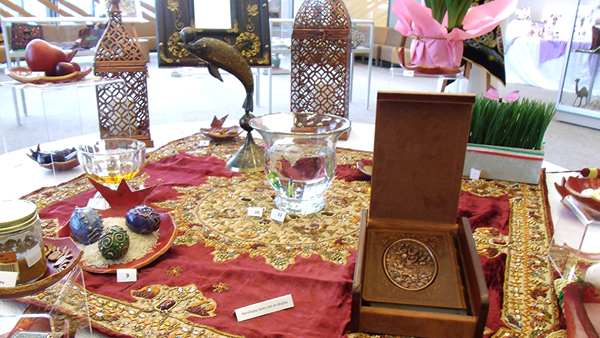|
Don't miss the colorful Nowruz exhibit in the Henry Madden Library showcasing the Persian New Year. Located on the second floor of the library in the Ellipse Gallery, the exhibit is available through April 25. There is an open house and reception from 5:30 - 7 p.m. Thursday, March 28.
Nowruz, or “new day,” is a Persian national festival celebrated for 13 days, beginning with the first day of spring. It represents the expectation of a prosperous and happy coming year. The holiday promotes peace and unity and is rich in folkloric tradition and symbolism.
A celebration for the young and old, Nowruz connects the generations to the history of their forebears. Gifts, parties, and togetherness mark the holiday, along with ancient customs going back through the centuries.
Denoting a spirit of joy and renewal, the festival is replete with symbolic meaning and marked by traditions of old origin.
Fifteen to 10 days before spring, families prepare "sabzeh" — grains of wheat or lentil that germinate and grow in a dish of water. Fresh green blades spring up as a token of hopes to come. Central to the celebration is the "haft seen" table, or altar, decorated with seven articles whose names begin with the letter "S":
- sabzeh (green sprouts) symbolizing rebirth
- samanu (sweet pudding) symbolizing affluence
- senjed (dried oleaster tree fruit) symbolizing love
- sîr (cloves of garlic) symbolizing medicine
- sîb (red apple) symbolizing beauty and health
- somaq (sumac berries) symbolizing sunrise
- serkeh (vinegar) symbolizing the patience and wisdom of age
Other articles of good omen include sonbol (hyacinth flower) symbolizing spring, sekkeh (coins) symbolizing wealth, candles symbolizing enlightenment, a mirror symbolizing reflections of the future, decorated eggs symbolizing fertility, a bowl of water with an orange symbolizing the earth and its position in the universe, rose water symbolizing magical cleansing powers, and a bowl with goldfish symbolizing life.
Faculty member Dr. Negin Tahvildary, an adviser for Middle East Studies Cultural Club, collaborated with the library to present the Nowruz exhibit on campus. To read more, click here.
See flyer.
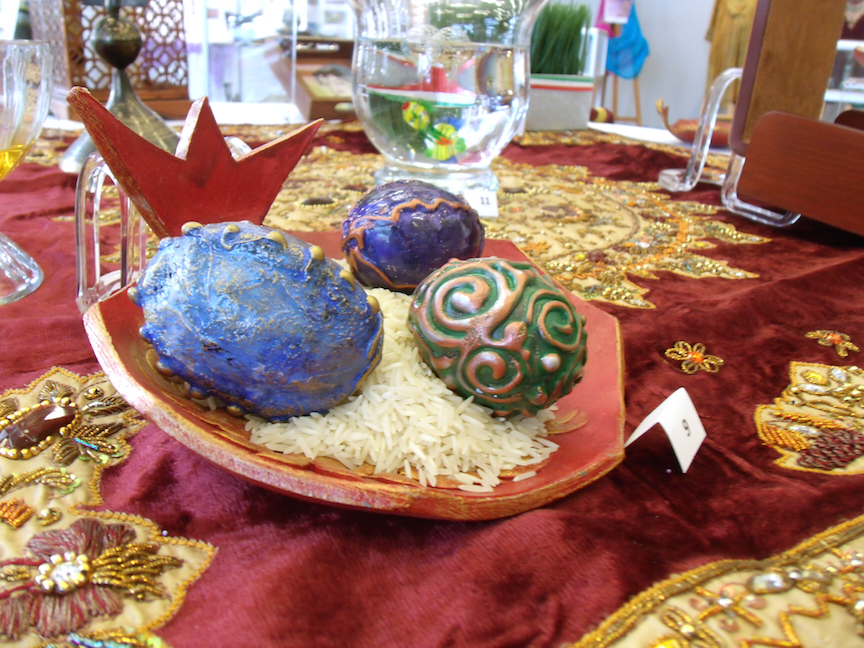
|
|
Decorated eggs symbolizing fertility.
|
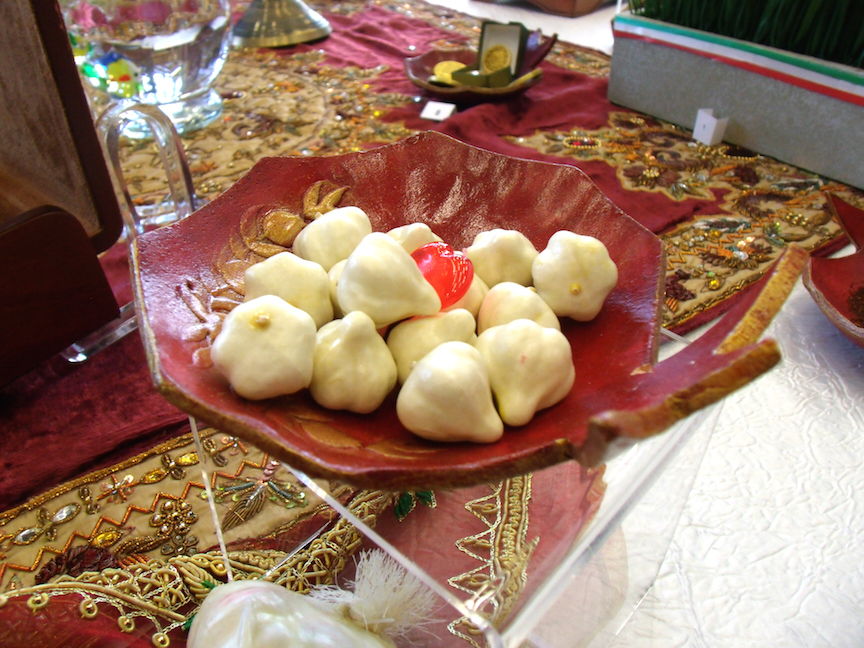
|
|
Cloves of garlic symbolizing medicine.
|
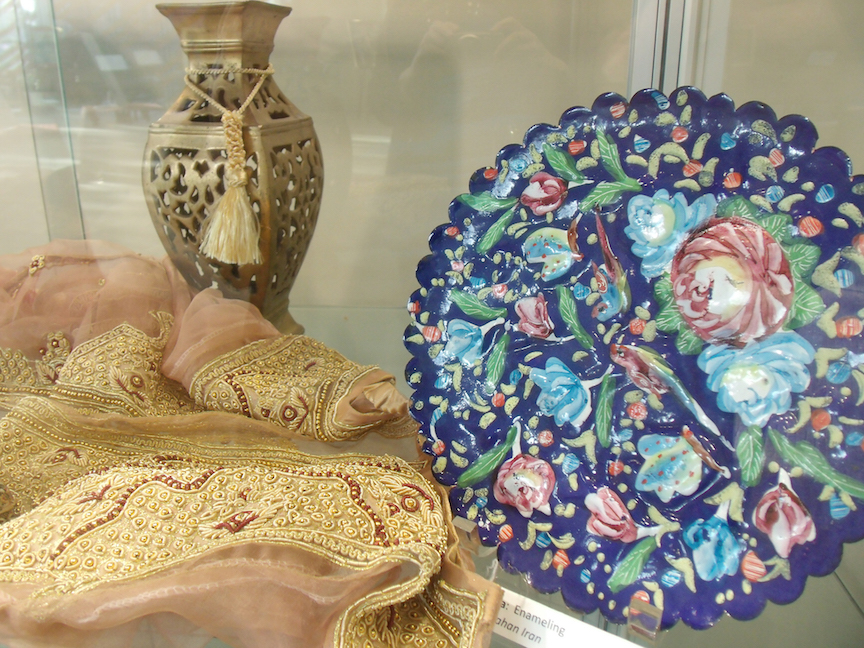
|
|
Symbols of Nowruz: "new" clothes, lamps or candles, and a traditional enameled plate.
|
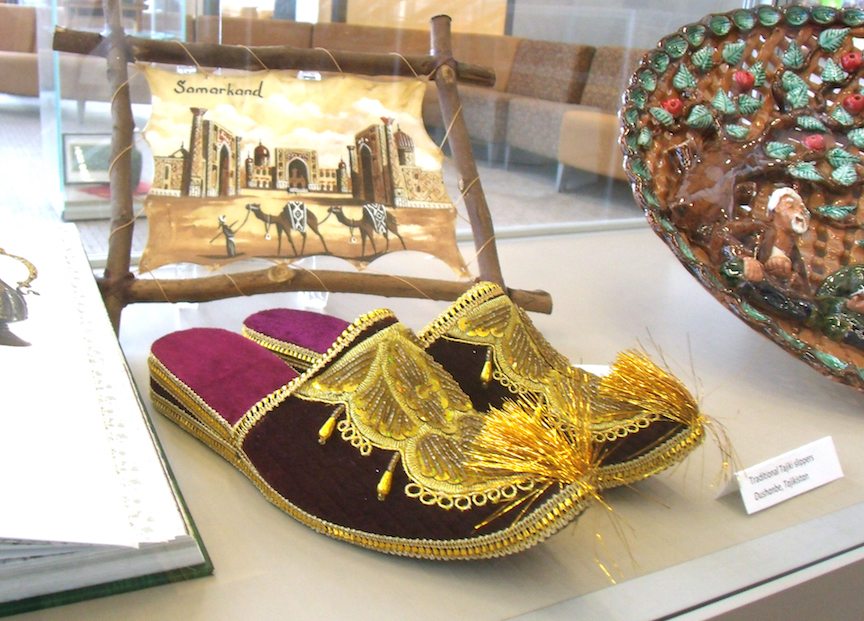
|
|
Traditional slippers worn for Nowruz.
|
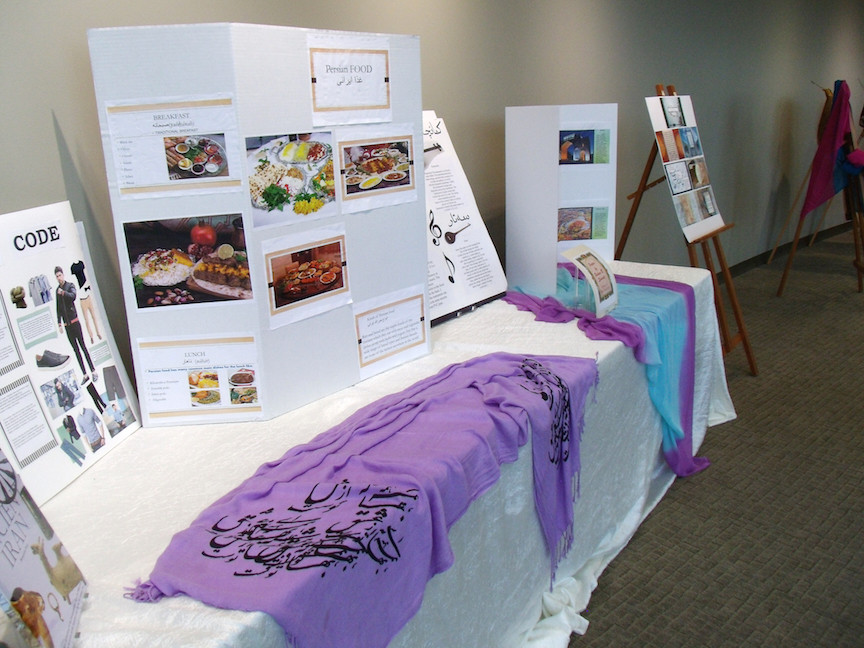
|
|
The Nowruz exhibit features Persian traditions, such as food and clothing, central to the festival.
|
|


